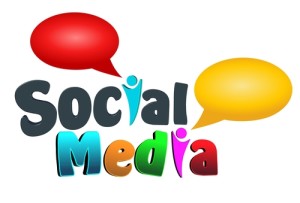While creating a yearbook is a long process, before you know it the school year could be coming to an end and it is time to hand out your class yearbooks.

There is nothing worse than it being “hand out day” and your book isn’t ready. That is why it is extremely important to keep to deadlines with your entire yearbook committee and staff.
So how do you keep a volunteer staff to deadlines? Here are a few tips:
- Create “dummy” deadlines way ahead of your real deadlines. This buffer will put pressure on the staff to keep things moving along but also allow you to have some “breathing room” before the book goes to press in case a deadline isn’t met.
- Encourage the staff to send in increments. That means if 20 pages are complete, send them. Don’t wait until the other 40 pages are finished. This will put less pressure on the final eyes to review everything, as everything won’t have to wait until the “25th hour”.
- Incentivize days off when work comes in early. This will take the stress off everyone and give the team a break from the grind.
- Utilize a group messenger text system such as the app GroupMe that can on a regular basis provide upcoming deadline alerts. Students these days all have smartphones that they are looking at every few minutes. By providing deadline alerts via their phones will keep the deadlines top-of-mind.
By simply following steps like these, will not only help get your yearbook elements coming in on time but potentially even early. Give them a try; they can make the yearbook process run more smoothly!
There are a lot of hands that go into creating a class yearbook, and just like a big business, there needs to be proper communication in order to create a fantastic finished product.

One extremely important part of the yearbook that needs to stay consistent throughout is the style of it. That includes for example, how the photos are cropped and what fonts are utilized throughout the yearbook.
For this reason, it is definitely a great idea to create a consistent style guide that everyone on the yearbook staff can utilize when creating and doing his or her portion of the book.
Basically, a style guide can be a master document that provides guidelines on how the yearbook should be presented after it is printed. Here are some elements it should define and include:
- The tone of the yearbook: This area should explain the theme of the book and how that theme is approached. Should the book have a serious tone? Maybe more of an academic or educational type tone? In this section of the guide your tone should be defined clearly so that everyone is on the same page.
- How the yearbook should speak to the readers: Should the book include sarcasm or should it include more dry and matter of fact type humor? How should photo captions be written? It is here where you will define the voice of the yearbook.
- The visual component is another important area: It is here where you will showcase the approved typography that should be used as well as font and image sizes as well as any approved logos. In addition, a color palate should be created with CMYK colors so no one gets confused with the shades of a particular color that is being used.
- Defining the potential variables in the book needs to be mandatory: For example, dates and times. Should it read April 8th or April 8? Maybe it should read the 8th of April? As for times should you use 12 noon or 12:00p.m.? While either of these methods can be used it is important that the book is consistent throughout.
- Lastly, every yearbook style guide should include a checklist: This will help make sure nothing gets missed. Some bullets on this list should include – I have run a spellcheck, I checked spacing and I have saved the work in the proper file. This is a great way to make sure “no stone is left unturned.”
A style guide is a great “bible” that everyone on the yearbook committee should have a copy of to make sure the book exceeds all expectations for everyone on the yearbook committee as well as everyone in the graduating class.
Selling advertising space for your yearbook can sometimes be challenging. It takes a dedicated team and a lot of time to be successful. Typical methods to fundraise for your yearbook usually include going door-to-door or via a call-a-thon to local businesses.
 This year instead of the typical methods why not try utilizing email? Research the top 30 to 50 local businesses in the area and then call, not to sell them but to ask for the owners (or decision makers) email address. Make sure to tell them who you are what you will be emailing them about. This way you aren’t spamming.
This year instead of the typical methods why not try utilizing email? Research the top 30 to 50 local businesses in the area and then call, not to sell them but to ask for the owners (or decision makers) email address. Make sure to tell them who you are what you will be emailing them about. This way you aren’t spamming.
Then put these emails into a CSV or excel document and sign up for an online email software program. Some basic popular programs include Constant Contact and MailChimp (both offer FREE trial accounts).
Once you have a list they have a bunch of templates within the portal that you are easily able to edit. Be sure to use a colorful, easy to read fonts and try to state your case on why advertisers should sponsor the book. You can do this by:
- Explaining how advertising in your yearbook can benefit their business.
- What exactly the funds are going too.
- An easy call-to-action on how they can make their purchase or for the various options they have available to them.
Don’t spam and send out an email everyday. Send it out once every month or so and always update the subject line.
By utilizing email instead of the phone or face-to-face method makes it less uncomfortable for the business owner to be put on the spot. This gives them an opportunity to think about it and be able to get back to you without having to provide an immediate response.
Sometimes “out-of-the-box” ideas are all that is needed to get those fundraising dollars you greatly want and need.
 As a yearbook advisor or staff member, you may have questions about whether or not to use social media content in your yearbook. Social media, including networks such as Facebook, Instagram and Twitter, have become a big part of our daily lives and are commonly used communication channels in today’s generation. That doesn’t mean that all content used on social networks is necessarily appropriate for the school yearbook.
As a yearbook advisor or staff member, you may have questions about whether or not to use social media content in your yearbook. Social media, including networks such as Facebook, Instagram and Twitter, have become a big part of our daily lives and are commonly used communication channels in today’s generation. That doesn’t mean that all content used on social networks is necessarily appropriate for the school yearbook.
Here are a few tips when considering adding social media content in your school’s yearbook:
- All the parties involved in the content need to provide consent before anything is printed.
- Confirm that all images used in the posts don’t have copyright or rights-managed restrictions on them. Images can always be deleted on social network. Once they are printed and published though – it can be a whole new “ballgame” when it comes to legality. The last thing you need is to be publishing an image that is copyrighted and not legally allowed to be used.
- Any content that is used shouldn’t be controversial in nature. What may seem appropriate today may not in 15 years when looking back.
- Subliminal, inside-joke messages should always be a no-no. While they may make sense to some, they probably won’t make sense to most. Instead, use social media content that will be memorable and understandable to all. Perhaps homecoming content or tweets and photos from the prom.
Social media hugely influences today’s younger generation and can play a big part in their lives. However, not post or tweet is appropriate for the school yearbook.
Creating your class yearbook isn’t a two-minute process. A lot of hard work, teamwork and dedication are involved in making it look great. For a graduating student or students that have a lot going on, staying focused with your tasks on the yearbook committee can be challenging. Students aren’t getting paid to be part of the group and at times can feel worn out and frustrated.

As a committee lead, teacher or faculty member it is important to build positivity with your yearbook committee. Here are a few ideas to help achieve this:
- Recognize accomplishments. When a certain task for the yearbook is complete invite the entire team to have a small celebration such as a pizza party. Toast those special individuals that contributed to that part of the yearbooks success. This positive reinforcement will help those teams to continue to work hard and push others to work hard as well.
- Show support. Don’t throw anyone on the committee “out to the wolves”. This is essential for the sales team. By providing support and giving tips will lets those committee members that are on the front line know they aren’t alone and that you and the rest of team have their back.
- Motivate the team with incentives. Everyone loves a great incentive. It makes people work harder. While a monetary incentive won’t work in a setting like this a discount off their own yearbook maybe all it takes to get your committee to work hard and great.
There is always that saying “Garbage in…Garbage out.” If you show you don’t care and don’t provide guidance your final product will more than likely let down most expectations. By staying positive and always encouraging will for sure keep your yearbook committee at top speed!





